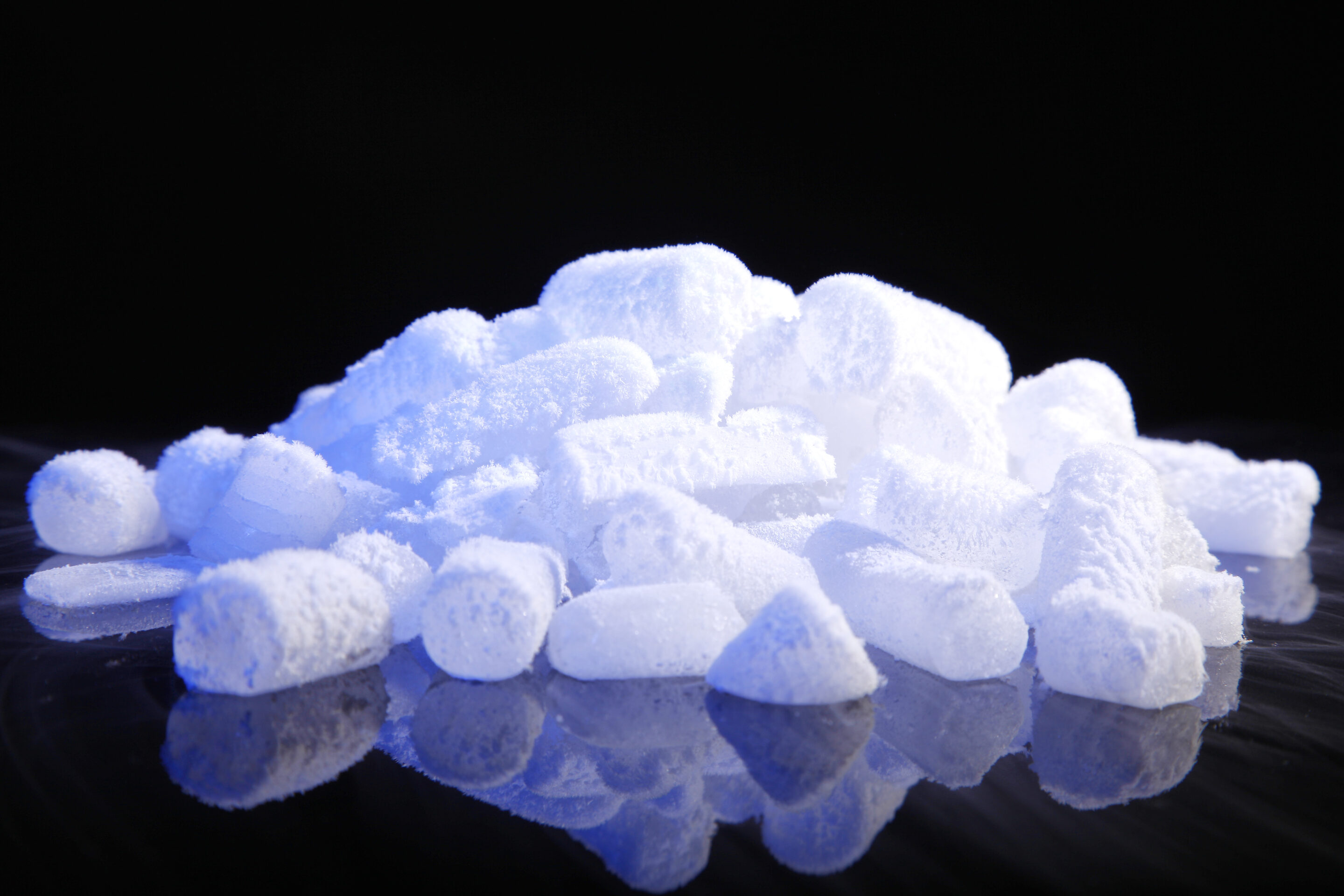What is dry ice blasting?
Dry ice blasting is a method that uses carbon dioxide (CO2) pellets as a blast media to remove light paint, oil, soot, smoke residue, graffiti, pollution, grease, mold, tar, and other soiling conditions and surface contaminants from solid surfaces.
Although the process is similar to other abrasive cleaning methods, there are clear differences. First, dry ice blasting is non-destructive. The CO2 pellets are soft and change to gas (sublimate) upon contact with the surface material. Second, the process leaves no secondary waste behind, making it environmentally friendly and safe to use on molds, vehicle interiors, motors, turbines and fins, food and beverage processing equipment, semiconductors, and even antiques & other delicate items.
How does dry ice blasting work?
Dry ice blasting requires a dedicated dry ice blaster that stores dry ice; a sizable air compressor with an air dryer to provide clean, dry compressed air; blast and air hoses; and nozzle(s). The amount of run time is determined by the size and capacity of the dry ice tank also known as a ‘hopper’.
Most systems use a rotary feed system to move the dry ice from the tank into the blast hose, which then pushes the ice up to the nozzle with pressurized air. Other dry ice systems increase their cleaning power by adding abrasives to the dry ice stream.
When the dry ice stream hits the unwanted material, it sublimates, creating an explosive freezing effect that loosens and removes surface particles.
What are the advantages of dry ice blasting?
The main advantage of dry ice blasting over other blasting methods is that no blast media remains on the site, which means easier clean up. Only the loosened material must be cleaned away.
The process is odorless, non-toxic, and gentle enough to be used on soft substrates.
It’s a good option for many manufacturing operations, including the food and beverage industry. Many substrates are fair game for the dry ice method, including plastic, stainless steel, soft metals, and others, reducing reliance on harsh solvents and chemicals.
Another advantage is that because it’s a dry method, it can be used to clean-in-place (CIP) electrical machinery. Frequently, the electrical gear can operate or have limited downtime while it is being cleaned. Dry ice blasting is also useful to clean and remove smoke damage and mold.
Dry Ice Blasting is a very fast process – the amount of work that can be accomplished by one operator will far surpass productions rates of more traditional, manual cleaning methods.
Many industries can take advantage of dry ice blasting as an ecological and efficient cleaning method. Other examples include automotive, pharmaceutical, energy production, aviation, packaging, wood and paper, disaster recovery and commercial restoration.
What are any disadvantages of dry ice blasting?
Here are some of the limitations and safety considerations of dry ice blasting.
- Limited shelf life: Unlike other blast media, dry ice can only be stored for a short time. A typical storage container holds 500 pounds of dry ice and should be used within five days for best results. Dry ice containers should be stored in a cool, well-ventilated location.
- Lead Time: Planning is critical – if you run out of Dry Ice before your project ends, you may have to wait several days to get resupplied as Dry Ice is made to order.
- Safety risks: Dry ice blasting does pose some health and safety risks. Dry ice can burn bare skin, and working with CO2 in a confined space can pose a breathing hazard. Operators must wear personal protective equipment (PPE), including hand, eye, and ear protection. For confined spaces or tight workspaces proper ventilation or air-fed respirators are a must.
- Flaking: Although dry ice blasting does not produce the dust particles that traditional blasting methods do, the soil tends to come off as flakes that land close to the blasting location. However, this material can be removed with a vacuum or a broom.
- Supply Air: Most applications require a minimum of 185 CFM to optimize performance. Sometimes even more air volume is needed to be effective. Note we are referring to air volume, NOT PSI ratings.
But since the method is not abrasive, further steps such as surface treatment or re-painting, often are unnecessary. So while dry ice blasting might not be perfect for every situation, it may be perfect for whatever situation you have next. Contact us today to discuss your next project with one of our experts.


